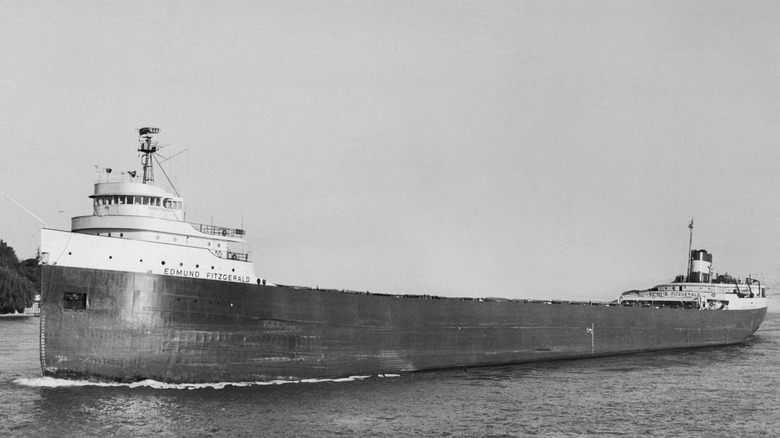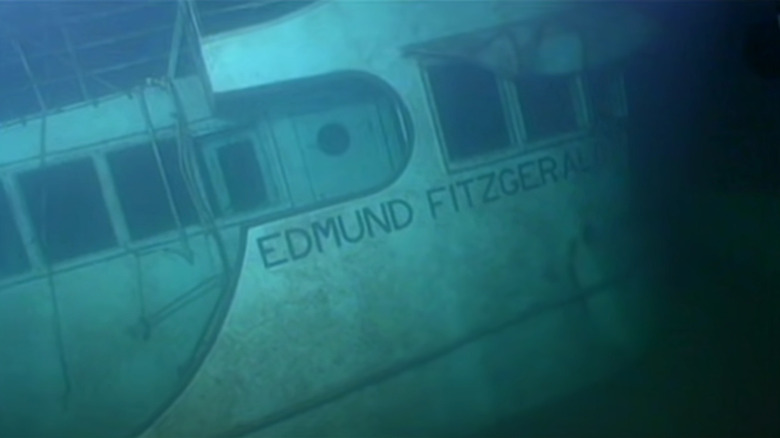48 Years Later, The Sinking Of The Edmund Fitzgerald Remains A Mystery
On November 10, 1975, the Great Lakes freighter known as the SS Edmund Fitzgerald sank in 535 feet of water on Lake Superior. All 29 crew members were lost. It was hauling 26,116 long tons (about 58.5 million pounds) of processed iron ore — also known as taconite — when it disappeared from radio and radar contact.
The ship went down while battling the 25-foot waves and 50 mile per hour winds of a disastrous storm. The ship was not found until three days later, when it was picked up by U.S. Navy surveillance aircraft, and it wasn't until May of the next year that the wreck was surveyed with equipment from the United States Navy.
The Edmund Fitzgerald was an impressive freighter, and the largest of its type when it was first launched on June 8, 1958 — measuring 729 feet long with a gross tonnage of 13,632 tons. According to the Great Lakes Shipwreck Museum, the Edmund Fitzgerald's day job was transporting taconite to steel mills in Ohio and Michigan.
The ship, much like others in its class, was powered by a Westinghouse steam turbine that put out in excess of 7,500 horsepower. However, it wasn't built for speed, it was built for power and the ability to transport millions of pounds of cargo for days on end without complaining. It didn't complain for the 17 years it was on the water.
When the gales of November came slashin'
Per unclassified information released by the United States Coast Guard after the Fitzgerald's sinking, it was also equipped with an extensive communications suite. Nearly 50 years ago, Great Lakes shipping was complex business, and ships were always in contact with one another and parties on the ground. After all, shipments need to be made safely and on time.
The SS Edmund Fitzgerald was fitted with five multi-channel radios that had access to a wide range of frequencies. Additionally, it had two radar sets for scanning the surface of the water for any potential obstacles. Interestingly, the Coast Guard also states that the Fitzgerald was not fitted with any hardware to gauge the depth of the water it was traversing, as shipping qualifications from the time did not require such a device.
The mystery of the Edmund Fitzgerald surrounds its sinking, as there has not been any sort of consensus as to how the ship was lost. There are two prevailing theories: According to the Coast Guard, often responsible for investigating civilian maritime disasters, loose hatches on the Fitzgerald's topside caused water to rush in and eventually sink the ship.
The other hypothesis is that a large wave in the storm caused the front of the ship (the bow) to plunge under the sea and take on water that way. Either way it sank, the Edmund Fitzgerald's crew didn't send out a single distress signal. When the ship was surveyed in 1976, it was found that the ship was split in two, showing that the bow potentially slammed into the bottom of Lake Superior. Eventually the Fitzgerald's bell was recovered in 1994, and is currently on display at the Great Lakes Shipwreck Museum in Whitefish Point, Michigan.

